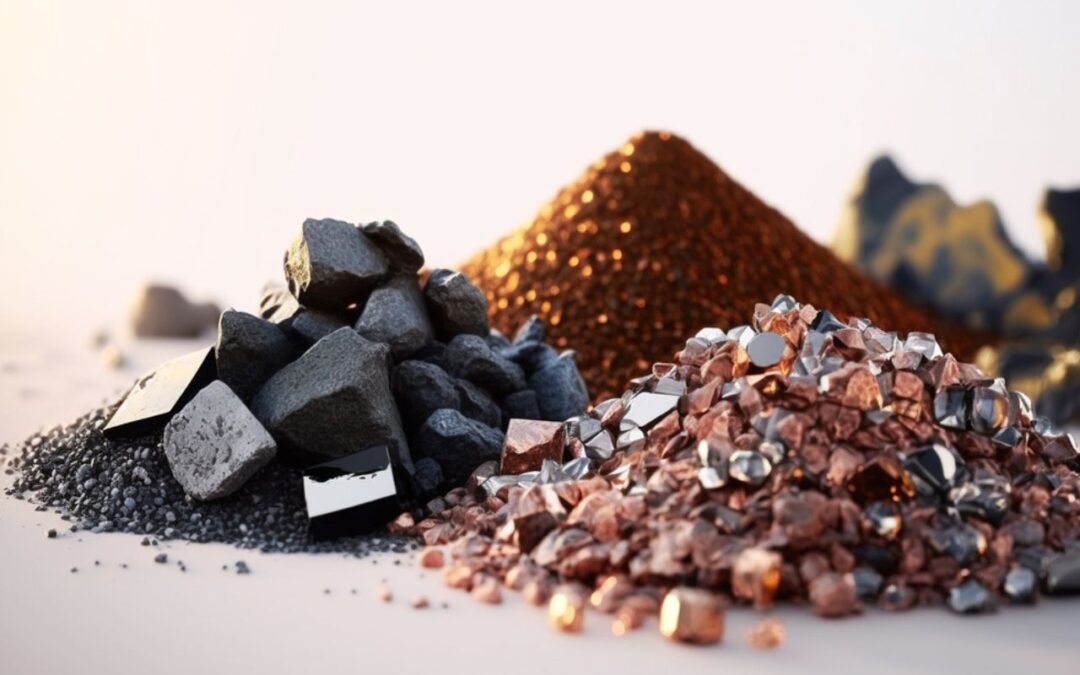India’s rare earth magnet sector is accelerating on energy-transition demand and policy push. The market hit USD 637.4 million in 2024, projected to reach USD 993 million by 2033 at a 5.1% CAGR. A proposed ₹7,000+ crore incentive aims to localize NdFeB capacity up to 6,000 TPA, with pilot phases targeting 500 TPA now and 5,000 TPA by 2030.
India is set to nearly triple its incentive program for rare earth magnet manufacturing to over $788 million (around ₹6,600 crore). The move aims to boost domestic production and reduce dependence on China, strengthening India’s position in EV, renewable energy, and defence sectors.
Rare earth magnets are powerful permanent magnets made from rare earth elements like neodymium and samarium. They are much stronger than regular magnets and are used in electric vehicles, wind turbines, smartphones, and medical devices. Their strength helps create compact, energy-efficient motors and advanced electronic products.
The proposed increase in India’s rare earth magnet incentive plan, awaiting cabinet approval, marks a major jump from the earlier $290 million allocation. Focused on securing vital materials for EVs, renewable energy, and defence, the plan highlights India’s intent to strengthen supply chains, though the final amount may change.
China Dependence
India is ramping up efforts to build a rare earth magnet supply chain as China, controlling 90% of global output, tightened export rules amid tensions with the US. The move disrupted global automakers, prompting India to act. PM Modi emphasized that critical minerals shouldn’t be weaponised and urged diversified, stable global supply chains.
India’s rare earth expansion aligns with global efforts to reduce dependence on China but faces hurdles like limited funding, technical expertise, and long project cycles. As domestic production remains unviable without subsidies, state-owned enterprises are taking the lead in forming overseas mining partnerships to secure critical mineral supplies.
China continues to dominate rare earth magnet technology, while mining these elements economically remains difficult and environmentally risky. India’s government plans to support around five companies with production-linked and capital subsidies to boost domestic capability. However, China’s recent import licenses exclude Indian firms, underscoring India’s dependency and the challenges in achieving technological self-reliance.
Magnet Free
The government is funding research on synchronous reluctance motors, which could reduce reliance on rare earth materials in the future. Meanwhile, global suppliers have shown interest in meeting India’s rare earth needs. With an estimated annual demand of around 2,000 tonnes of oxides, global producers can easily supply India’s requirements.
India aims to attract global magnet manufacturers through its expanded incentive program, encouraging local ventures to reduce dependence on Chinese imports driven by heavy subsidies and low prices. However, if China extends its eased export curbs to India, cheaper Chinese magnets could flood markets, slowing foreign investment and domestic growth in India’s emerging magnet sector.
Conclusion
India’s rare earth magnet initiative marks a crucial step toward reducing dependence on China and strengthening domestic manufacturing. While policy support and global collaboration are vital, success will hinge on technological expertise, timely project execution, and sustained investment to build a competitive, self-reliant supply chain for critical materials.
Written by Abhishek Singh
Disclaimer

The views and investment tips expressed by investment experts/broking houses/rating agencies on tradebrains.in are their own, and not that of the website or its management. Investing in equities poses a risk of financial losses. Investors must therefore exercise due caution while investing or trading in stocks. Trade Brains Technologies Private Limited or the author are not liable for any losses caused as a result of the decision based on this article. Please consult your investment advisor before investing.






